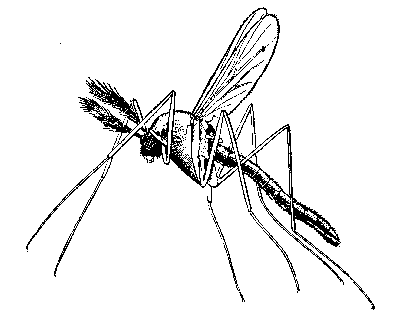In the wild, tigers mostly feed on larger and medium sized animals, with most studies indicating a preference for native ungulates averaging 90 kg (200 lb) at a minimum.[71][72] Sambar, chital, barasingha, wild boar, gaur, nilgai and both water buffalo and domestic buffalo, in descending order of preference, are the tiger's favoured prey in India.[71] Sometimes, they also prey on other predators, including other large species such as leopards, pythons, sloth bears and crocodiles. In Siberia the main prey species are manchurian wapiti and wild boar (the two species comprising nearly 80% of the prey selected) followed by sika deer, moose, roe deer, and musk deer.[73] In Sumatra, sambar, muntjac, wild boar, and malayan tapir are predominantly preyed upon.[74][75] In the former Caspian tiger's range, prey included saiga antelope, camels, caucasian wisent, yak, and wild horses. Like many predators, they are opportunistic and will eat much smaller prey, such as monkeys, peafowls, other largish, ground-based birds, hares, porcupines and fish.[71]
Adult elephants are too large to serve as common prey, but conflicts between tigers and elephants, with the huge elephant typically dominating the predator, do sometimes take place.[76] A case where a tiger killed an adult Indian Rhinoceros has been observed, although adult rhinoceros are often ignored as potential prey due to a combination of very large size, a short temper and very thick skin, which render them a laborious and very difficult kill.[77] Young elephant and rhino calves are occasionally taken. Tigers also sometimes prey on domestic animals such as dogs, cattle, horses, and donkeys. These individuals are termed cattle-lifters or cattle-killers in contrast to typical game-killers.[78]
Old tigers, or those wounded and rendered incapable of catching their natural prey, have turned into man-eaters; this pattern has recurred frequently across India. An exceptional case is that of the Sundarbans, where healthy tigers prey upon fishermen and villagers in search of forest produce, humans thereby forming a minor part of the tiger's diet.[79] Tigers will occasionally eat vegetation for dietary fiber, the fruit of the Slow Match Tree being favoured.[78]
Tigers are thought to be nocturnal predators, hunting at night.[80] However, in areas where humans are typically absent, they have been observed via remote controlled, hidden cameras hunting during the daylight hours.[81] They generally hunt alone and ambush their prey as most other cats do, overpowering them from any angle, using their body size and strength to knock the prey off balance. Successful hunts usually require the tiger to almost simultaneously leap onto their quarry, knock it over and grab the throat or nape with its teeth.[36] Even with their great masses, tigers can reach speeds of about 49–65 kilometres per hour (35–40 miles per hour), although they can only do so in short bursts, since they have relatively little stamina; consequently, tigers must be relatively close to their prey before they break their cover. If the prey catches wind of the tiger's presence before the moments of the pounce, the tiger will usually abandon the hunt rather than chase prey or battle it head-on. Tigers have great leaping ability; horizontal leaps of up to 10 m (33 ft) have been reported, although leaps of around half this amount are more typical. However, only one in twenty (or 5–10%) hunts, including any instances of stalking in proximity to potential prey, ends in a successful kill.[36][80] An adult tiger can go up to two weeks without eating but then can gorge on up to 34 kg (75 lb) of flesh at one sitting. In captivity, adult tigers are fed 3 to 6 kg (6.6 to 13 lb) of meat a day.[36] Due to their low hunting success rate, ability to go prolonged periods without food and naturally low population densities, tigers typically have little to no deleterious effect on the populations of the species they prey on. Several other large carnivores, such as gray wolves, spotted hyenas and lions, live in groups and need to capture relatively greater quantities of prey in order to feed and maintain stability in their respective packs, clans or prides.[36]
When hunting large prey, tigers prefer to bite the throat and use their extremely powerful forelimbs to hold onto the prey, often simultaneously wrestling it to the ground. The tiger remains latched onto the neck until its prey dies of strangulation.[17] By this method, gaurs and water buffalos weighing over a ton have been killed by tigers weighing about a sixth as much.[82] Although they can kill healthy adults of large bovids weighing at least 1,000 kg (2,200 lb), tigers often select the calves or infirm of very large species.[19] Large prey can be quite dangerous to tackle, with the great bulk and massive horns of large bovids, the strong legs and antlers of mature deer and the long, powerful tusks of boars all being potentially fatal to the tiger. No other extant land predator routinely takes on prey this large on their own.[83][84] Whilst hunting sambars, which comprise up to 60% of their prey in India, tigers have reportedly called out a passable impersonation of the male sambar's rutting call in order to attract them.[71][78] With small prey such as monkeys and hares, the tiger bites the nape, often breaking the spinal cord, piercing the windpipe, or severing the jugular vein or common carotid artery.[85] Though rarely observed, some tigers have been recorded to kill prey by swiping with their paws, which are powerful enough to smash the skulls of domestic cattle,[78] and break the backs of sloth bears.[86] After killing their prey, tigers sometimes drag their prey to conceal it in vegetative coverage, usually pulling it by grasping with their mouths at the site of the killing bite (on the throat in large prey, on the nape in smaller prey). This too can require great physical strength. In one case, after it had killed an adult gaur, a tiger was observed to drag the massive carcass over a distance of 12 m (39 ft). When 13 men simultaneously tried to drag the same carcass later, they were unable to move it.[36]
During the 1980s, a tiger named "Genghis" in Ranthambhore National Park was observed frequently hunting prey through deep lake water,[87] a pattern of behaviour that had not been previously witnessed in over 200 years of observations. Moreover, he appeared to be extraordinarily successful for a tiger, with as many as 20% of hunts ending in a kill.











 on ice.
on ice.